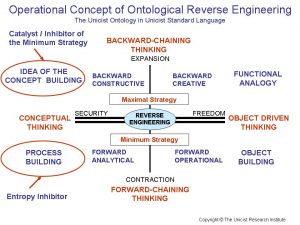Using Reverse Engineering To Understand Environmental Impacts

Executive Summary

Reverse engineering is the process of dismantling an existing system or product to better understand how it functions. This process can unearth a deep and nuanced understanding of environmental impacts that would otherwise remain obscured. By deconstructing the inter-workings of a system or product, oversights and inefficiencies can be pinpointed with great precision enabling tailored improvements to be made. Reverse engineering offers a wide array of benefits that range from eco-friendly production processes to sustainable product design.

Introduction
Environmental impacts are a critical factor increasingly considered in businesses and industries. Consumers are becoming more environmentally-conscious and discerning about the products and services they purchase. Companies that demonstrate a commitment to sustainability are not only meeting the demands of a growing market segment; they are also gaining a significant edge over their competitors.
Techniques of Reverse Engineering
- Identify Key Environmental Performance Indicators (KPIs)
- Measure aspects like energy consumption, carbon emissions, waste generation, and water usage.
- KPIs provide data-driven insights into critical impact areas.
- Deconstruct the System or Product
- Investigate the steps of a production or manufacturing process.
- Break down a product to identify components and materials.
- Assess Environmental Impact at Each Step
- Undertake a lifecycle analysis to assess the environmental footprint.
- Consider factors such as production, transportation, and disposal.
- Evaluate Existing Control Measures
- Examine current methods for reducing environmental impact.
- Determine opportunities to enhance or refine control measures.
- Identify Opportunities for Improvement
- Brainstorm innovative solutions to minimize environmental impact.
- Consider changes to processes, materials, or product design.
Advantages of Reverse Engineering
- Eco-friendly Production Processes
- Identify and eliminate inefficient or polluting steps in production processes.
- Discover opportunities to reduce energy consumption and minimize waste.
- Sustainable Product Design
- Ensure products are manufactured using sustainable and renewable materials.
- Engineer products for disassembly and recycling, promoting a circular economy.
- Targeted Improvements
- Focus resources on areas with the most significant environmental impact.
- Prioritize improvements that yield the greatest positive impact.
- Compliance with Environmental Regulations
- Gain clarity on environmental requirements and obligations.
- Implement measures to ensure compliance and avoid potential penalties.
- Marketing Advantage
- Demonstrate environmental leadership and align with consumer values.
- Attract environmentally-conscious customers and boost brand reputation.
Conclusion
Reverse engineering is a valuable tool assisting businesses in decoding the environmental footprint of their operations and products. This approach supports the formation of data-driven strategies to reduce environmental impact. Reverse engineering enables companies to enhance their sustainability strategies and demonstrate a commitment to environmental stewardship.
Keyword Phrase Tags
- Reverse Engineering Environmental Impacts
- Sustainability in Manufacturing
- Environmental Performance Indicators (KPIs)
- Data-Driven Sustainability Strategies
- Sustainable Product Design

This is a great article! Reverse engineering is a very effective way to learn about the environmental impacts of products and processes.
I think this article is misinformed. Reverse engineering is not a reliable way to understand environmental impacts.
This article provides a good overview of the benefits and challenges of using reverse engineering to understand environmental impacts. I would like to learn more about how this technique can be used to evaluate the environmental performance of processes.
I disagree with the author’s claim that reverse engineering can be used to identify potential environmental hazards. I think this is a oversimplification of the issue.
I find it ironic that an article about environmental impacts would recommend using a process that involves taking apart a product.
I think the author is being sarcastic when she says that reverse engineering can help raise awareness of environmental issues among consumers and businesses.
This is a very comical article. I can’t believe the author actually thinks that reverse engineering is a valuable tool for understanding environmental impacts.
I think this article is very well written and informative. I learned a lot about reverse engineering and its applications for understanding environmental impacts.
I agree with the author that reverse engineering can be a useful tool for understanding environmental impacts. However, I think it is important to be aware of the limitations of this technique.
I think the author is making a strong case for the use of reverse engineering to understand environmental impacts. I would like to see more research on this topic.
I find it interesting that the author mentions the challenges of using reverse engineering to understand environmental impacts. I wonder if there are any other techniques that could be used to overcome these challenges.
I think this article is very important and timely. Reverse engineering can be a valuable tool for understanding the environmental impacts of products and processes. I hope that this article will encourage more people to use this technique.